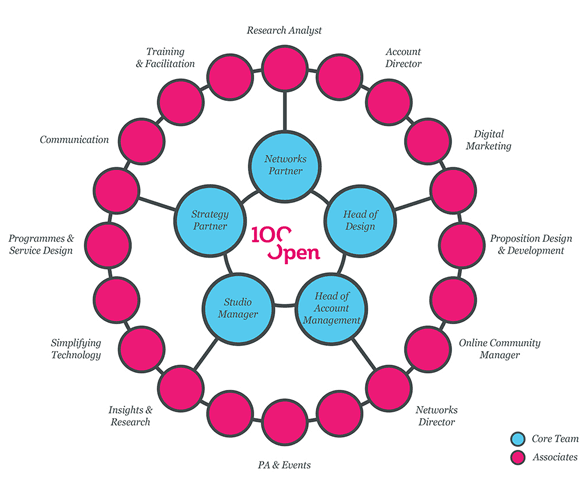Understanding Open Innovation
This is a Q&A with David Simoes-Brown, Founder and Strategy Partner, 100%Open. Rahul Ghosh, his inquisitor, is doing an MA in Digital Journalism at Goldsmiths College, University of London. The interview is part his final Masters project. His article is here. 
1. Could you briefly tell us your background and work in terms of Open Innovation? Could you tell us a bit more about the work 100% Open have done, their vision and aims?
After graduating as a Biology student, I spent some time working in advertising and product design. It was there when I learnt about human emotion as a driver for innovation – I wanted to help create products and services which truly connected with people and responded to their needs. 100%Open is about open innovation. We believe in the power of co-creation and help organisations find and develop new technologies, products and services through networks and collaboration.

We work globally from our offices in London with clients like Orange, LEGO, Barclaycard, BT, E.ON, P&G, Fujitsu, Virgin Atlantic, Interface, Royal Mail, Tesco, Discovery Channel, Detica, BAE Systems, Shop Direct, Cancer Research UK, McLaren, NATS, Pfizer, Danone, and Oxfam.
In our view, openness is the only way forward. The way closed systems are being challenged today leaves business with very few options beyond openness and transparency.
Our vision is where all innovation is open as a default position to the benefit of inventors, entrepreneurs, enterprise and economies.
2. Please speak about Open Innovation and the benefits of implementing this model generally. What are the expected benefits in different sectors? Please quote some brief examples.
Open innovation gets large organisations better innovations, faster and cheaper. We believe that in an increasingly networked work, being open is going to become the only way to do businesses.
For us, open innovation is innovating in partnership with those outside your company by sharing the risks and rewards of the outcome and process.
Sharing risks is important because innovation is risky and can be expensive – partners must be prepared to go together against the odds . Sharing rewards is equally important because a reward will get better quality ideas from people and will encourage them to collaborate with you in the future. These principles are true across all sectors. Hard IP is less important per se in services than in manufacturing but there are a plethora of interesting business models beyond licensing! Please refer to our website here for relevant case studies and examples to illustrate this.

3. What are the ways that your organisation incorporates and promotes a culture of openness and collaboration? Does ‘Openness’ work in all situations or is it better to have closed model in certain circumstances?
We have an open business model, both in terms of how we are organised and how we share our knowledge. We are flexible on how we work and where we work. All our work is Creative Commons too. Most or our tools are cloud-based and transparent to clients. We have no hierarchy, politics or secrets.

From an organisational point of view, we have a small, focused in-house team and collaborate extensively with a network of trusted Associates for specific projects. We enable conversation and knowledge-sharing across our network thought virtual project spaces, document sharing tools and an Innovation Lab where our team can put forward ideas and new initiatives to get feedback.
4. What does the future hold? Is Open innovation the way forward? What should government, businesses, and the general public do to prepare themselves/adapt?
Today, it is obvious that the best people and ideas are not always going to be inside your organisation, this is why companies need to open up and learn to collaborate with others in the outside world. Open however does not mean chaotic, and the process of collaboration is one that has to be managed carefully to ensure all partners benefit and the desired outcome is reached. The public is already well adapted to a networked world. Companies often still need to let go of old paradigms of protectionism in order to develop the products and services of the future. We are delighted to see more and more businesses wake up to this reality and embracing the open enterprise as a way to do business.
5. What is the role of Open Innovation in Social Innovation? How does it work in developing countries like countries in Africa?
At the moment, a minor role. Social innovation is largely incentivised by Governments and classic NGOs within a charitable model. No returns expected or measurable so it doesn’t really count as innovation.
The future is a more collaborative movement where advances like peer-to-peer funding and well-performing social investment funds are the norm, funded by a wide group of private, public and enterprise investors. We are advising Oxfam in this respect for their SEIF fund and the more forward thinking development agencies will no doubt play a major role.